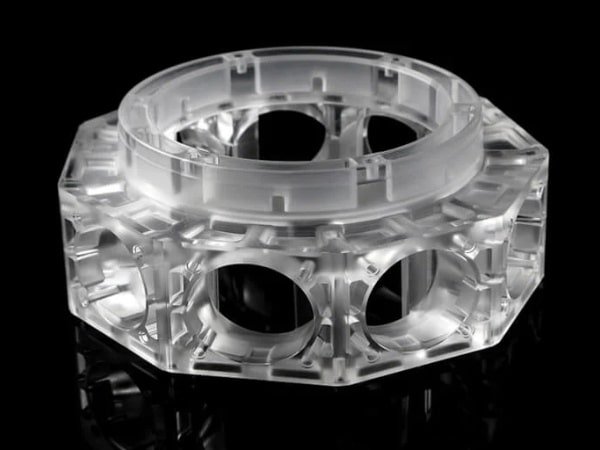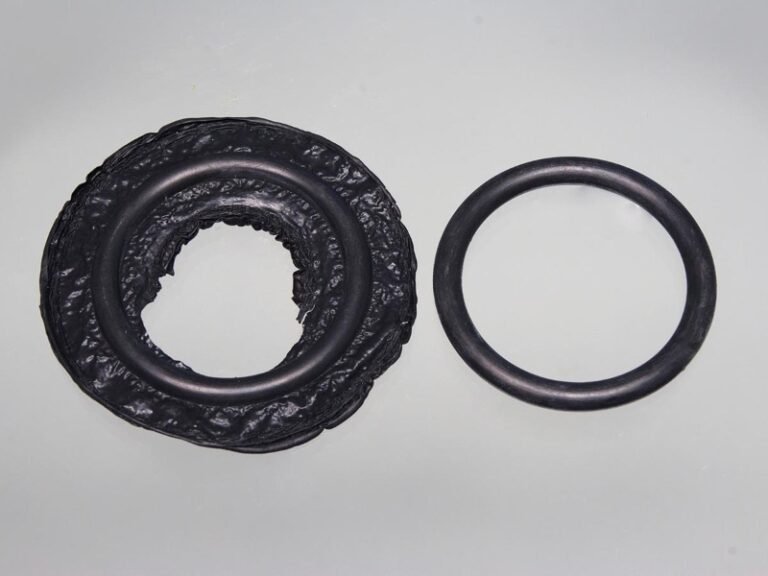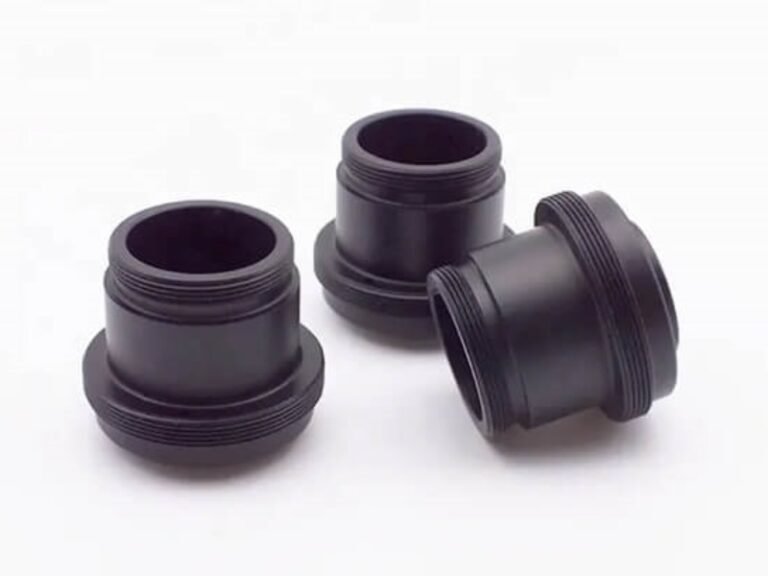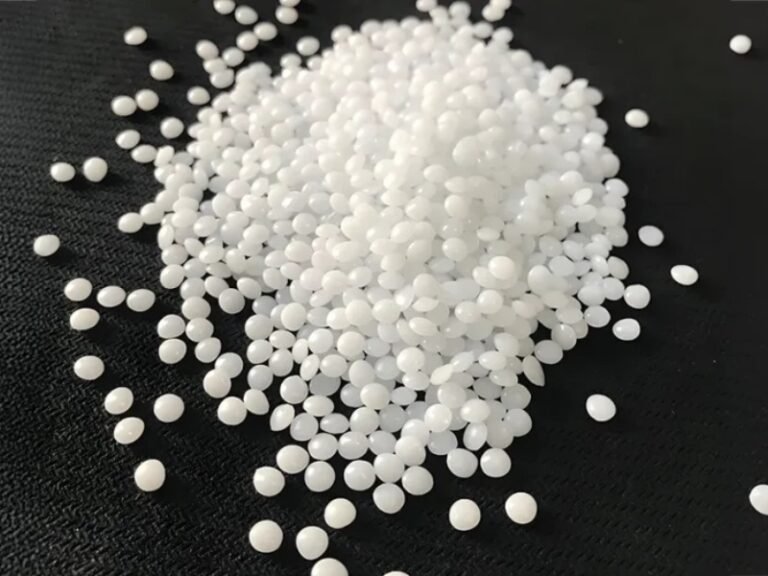CNC polycarbonate is a reliable manufacturing method for precision plastic polycarbonate components with tight tolerances and excellent surface finish. It is widely used to produce machined plastic parts that require durability and clarity. In this article, we will explore the polycarbonate machining material along with key processes for CNC machining polycarbonate.
What is Polycarbonate?

Polycarbonate is a clear, amorphous thermoplastic widely used in applications where high strength, optical clarity, and dimensional stability are needed. It combines the strength of glass with much lighter weight and excellent impact resistance. Unlike crystalline plastics, polycarbonate exhibits excellent toughness and heat resistance, typically withstanding temperatures up to 135-140 °C without significant deformation. Polycarbonate is available in forms like clear sheets, rods, or cylinders.
Properties of Polycarbonate
Polycarbonate’s exceptional properties make it a preferred material for CNC machining polycarbonate.
- High Impact Resistance: Polycarbonate boasts nearly double the impact strength of ABS, resisting fractures even under significant force.
- Optical Clarity: With 88% light transmittance, it rivals glass, perfect for lenses, windows, and displays in CNC machining polycarbonate projects.
- Dimensional Stability: With a low shrinkage rate of 0.6%–0.9%, polycarbonate resists deformation.
- Heat Resistance: It withstands temperatures up to 135–145°C (heat deflection at 264 psi), suitable for moderately high-temperature environments.
- UV Resistance: When stabilized, PC resists yellowing, though prolonged UV exposure can cause discoloration without proper treatment.
- Electrical Insulation: Its excellent dielectric strength makes it a go-to for electronic components in CNC polycarbonate applications.
- Machinability: Polycarbonate’s heat resistance and durability enable efficient polycarbonate machining with standard tools.
- Lightweight: Significantly lighter than glass or other thermoplastics, polycarbonate reduces component weight.
Common Types of Polycarbonate by Modification
Polycarbonate is available in various grades tailored for different uses:
General Purpose PC
The standard grade used for most applications.
Glass-Filled PC
Enhanced stiffness and dimensional stability with glass fiber additives.
UV-Stabilized PC
Additive packages improve resistance to yellowing and degradation under UV exposure.
Antimicrobial PC
Modified with agents to inhibit microbial growth, used for medical and food-contact applications.
Flame Retardant P
Incorporated flame retardants for enhanced safety in electrical housings.
Advantages and Limitations of CNC Polycarbonate Machining
Advantages
- Precision: Polycarbonate CNC milling enables tight tolerances (±0.005 inches), ideal for complex geometries.
- Material Efficiency: Subtractive CNC processes minimize waste, optimizing material use.
- Versatility: Supports multiple techniques like milling, drilling, and turning, accommodating diverse designs.
- Excellent surface finish: possible with sharp cutters and controlled feeds.
- Durability: Produces parts with excellent impact resistance, suitable for high-stress environments.
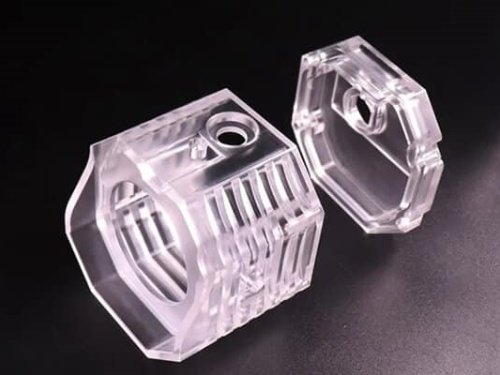
PC CNC machining Service
Limitations
- Scratch Susceptibility: PC surfaces are prone to scratching, requiring careful handling during polycarbonate machining.
- Heat Sensitivity: Heat buildup during machining can cause melting or warping.
- Tool Wear: PC’s abrasive nature accelerates tool wear, increasing costs.
- UV Degradation: Without stabilizers, prolonged UV exposure leads to yellowing.
- Large Part Challenges: Warping or deformation can occur in large parts due to clamping or thermal stress.
CNC Machining Processes for Polycarbonate
CNC polycarbonate machining employs various techniques, each requiring specific tools like single-flute carbide end mills, high-speed steel (HSS) tools, or diamond-coated tools for optical clarity. Common processes include:
CNC Milling

The most widely used technique for shaping polycarbonate sheets and blocks. CNC milling uses rotating carbide or high-speed steel tools to remove material layer by layer, creating slots, pockets, complex contours and flat surfaces. Milling is ideal for producing precise dimensions with smooth finishes. For thick sheets, multiple passes are recommended to prevent overheating and melting.
CNC Drilling
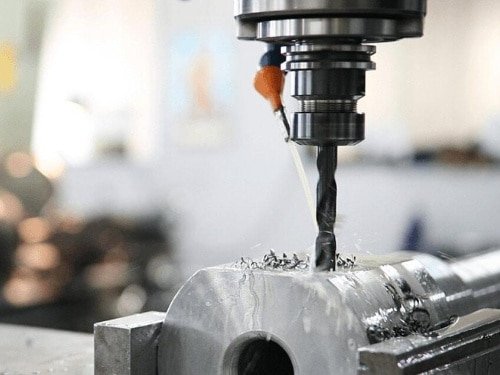
Creating holes with precision requires sharp drill bits and controlled feed rates. Proper spindle speed (typically 800-1000 RPM) and cooling are key to avoid cracking or chipping during the drilling of polycarbonate parts. Peck drilling minimizes chip buildup.
CNC Turning

Used on lathe machines for cylindrical parts such as rods and tubes. Turning polycarbonate requires tools with specific geometries to avoid excessive heat and stress concentrations. This process achieves tight dimensional tolerance and smooth surface finish for round components.
CNC Routing
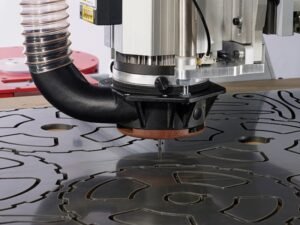
Primarily for cutting detailed 2D patterns from thin sheets with single-edged cutters, ideal for producing signage or decorative pieces from polycarbonate.
Laser Cutting
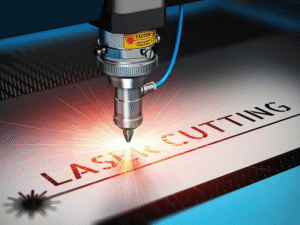
Employs high-powered lasers for precise cuts on thin sheets, requiring heat management to avoid melting.
Waterjet Cutting
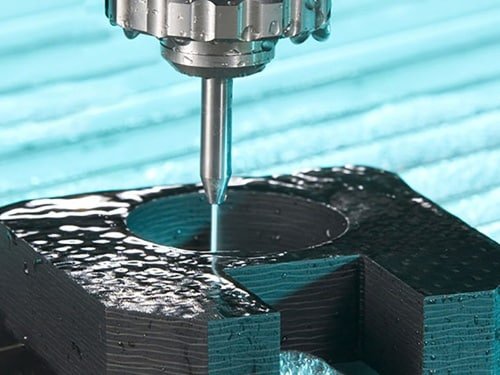
Uses high-pressure water with abrasives for thick PC, avoiding heat-related defects.
How to Perform CNC Polycarbonate Machining?
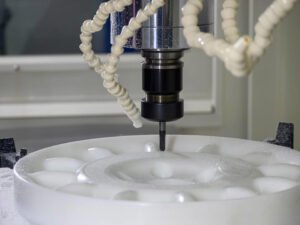
- Prepare CAD Drawing: Begin with a detailed digital model from customers or engineers, incorporating all necessary dimensions, features, and specifications.
- CAM Programming: Import the CAD model into CAM software to generate toolpaths for cutting operations. Define cutting tools, spindle speeds, feed rates, and depths of cut.
- Material Setup: Secure the polycarbonate sheet or block on the CNC machine’s worktable using clamps, vacuum hold-downs, or custom fixtures.
- Tool Selection and Setup: Choose sharp, uncoated tools, tailored to polycarbonate’s properties.
- Machine Setup: Setting up the CNC machine with the program, workpiece zero point, and configured cutting parameters.
- Coolant and Chip Management: Running the machining operation while using proper coolant or lubrication to prevent overheating.
- Annealing: Post-machining, anneal parts in a controlled oven to relieve internal stresses and prevent cracking.
- Finishing Operations: Performing finishing operations such as deburring, sanding, or polishing to improve surface quality.
- Final Inspection and Testing: Conduct quality checks using calipers, coordinate measuring machines (CMM), or visual inspections to verify dimensions, tolerances, and surface finish.
Applications of CNC Machined Polycarbonate
The combination of strength, clarity, and machinability makes cnc machining polycarbonate indispensable across industries:
- Automotive: Headlight lenses, instrument panels, turn signal covers.
- Medical Devices: Sterilizable housings, blood filters, diagnostic instrument components.
- Electronics: Durable display covers, keyboard keys, protective casings for devices.
- Aerospace: Transparent panels, instrumentation covers requiring weight reduction with durability.
- Household Appliances: Components for durable lightweight appliance parts.
- Safety Equipment: Impact-resistant shields and guards.
Common Defects in Polycarbonate Machining
Improper polycarbonate machining can lead to defects, including:
Scratches
Polycarbonate surfaces scratch easily; minimize handling damages and use appropriate surface treatments after machining.
Tool Marks
Visible lines from cutting, affecting clarity, preventable with optimized feed rates.
Cracking and Chipping
Improper tool sharpness or excessive clamping force leads to cracking. Use sharp single-flute cutters and avoid over-tightening clamps.
Melting/Burrs
Occurs if cutting speeds or feed rates are too high without coolant. Prevent by adjusting cutting parameters and applying water-based coolants.
Stress Cracking
Induced by heat or tensile loads, avoided through annealing and proper cooling.
Deformation
Warping from heat or clamping, especially in large parts.
Chatter
Vibrations causing surface imperfections, reduced by secure clamping and stable setups.
Surface Treatments for CNC Polycarbonate Parts
Polycarbonate’s tendency to scratch easily necessitates specialized surface treatments. Below are the primary finishing options for polycarbonate machining:
As-Machined
This cost-effective finish requires no additional post-processing, making it the fastest and most economical option. As-machined parts may exhibit minor tool marks or scratches, which are acceptable for non-aesthetic applications.
Vapor Polishing
Vapor polishing is one of the most effective post-processing treatments for achieving a smooth, high-gloss surface on polycarbonate parts. This technique exposes the machined component to a solvent vapor that slightly softens and melts the outer layer, allowing the material to flow and fill in tool marks and light scratches.
Buffing
Buffing is a mechanical polishing method that uses a rapidly spinning cotton polishing wheel to smooth the surface of polycarbonate parts. This process effectively removes surface imperfections such as tool marks and minor scratches.
Manual Polishing
Also known as hand polishing, manual polishing involves progressively sanding the surface of polycarbonate parts with increasingly fine grit sandpaper, followed by buffing or polishing compounds.
Scratch-Resistant Coating
Applying a scratch-resistant coating enhances polycarbonate’s durability while maintaining optical clarity. This treatment is ideal for high-wear applications. Coatings can also include anti-static, non-glare, UV-resistant, or anti-fog properties.
Bead Blasting
This process uses fine abrasive particles to create a uniform, matte finish, ideal for non-transparent applications like industrial components. Bead blasting masks minor scratches and tool marks but does not provide optical clarity.
Professional Tips for Successful CNC Polycarbonate Machining
- Use Sharp, Appropriately Sized Tools: Blunt cutters cause heat buildup and poor surface finish. Carbide tools with single or double flutes are preferred.
- Mill in Multiple Passes: For panels thicker than 5 mm, machine in two to four steps to achieve clean edges and reduce heat stress.
- Control Feeds and Speeds: Start at higher RPM with moderate feed and reduce speed on finishing passes to avoid melting.
- Apply Water-Based Coolants: Helps dissipate heat, extract chips, and extend tool life. Avoid aromatic solvents that may damage polycarbonate.
- Avoid Excessive Clamping: Over-tightening induces stresses and potential cracking; use soft jaws or clamps suited for plastics.
- Maintain a Clean Work Area: Clear chips frequently using vacuum or blower to prevent surface damage and tool interference.
Custom CNC Polycarbonate Parts with Zhongde
Zhongde specializes in CNC polycarbonate machining, offering end-to-end solutions for custom parts. As a trusted provider of precision machining china, we combine advanced CNC technology with expert engineering to deliver high-quality, reliable, and cost-effective manufacturing services tailored to your project needs.
FAQs of Custom Molding Tooling Production
Polycarbonate has a low shrinkage rate of 0.6%–0.9% when heated and dimensionally stable compared to some other plastics.
Compared to PMMA (acrylic), polycarbonate has much better impact resistance and toughness. Compared to ABS, polycarbonate generally has superior strength, heat resistance, and optical clarity, but ABS is easier to process. Compared to PA (nylon), polycarbonate has better transparency and impact resistance, but PA may offer better chemical resistance and wear properties.
Yes, we can achieve optical clarity using diamond-coated tools and vapor polishing in polycarbonate CNC milling, ensuring high-transparency parts for applications like lenses or windows. Contact Zhongde for a quote.
